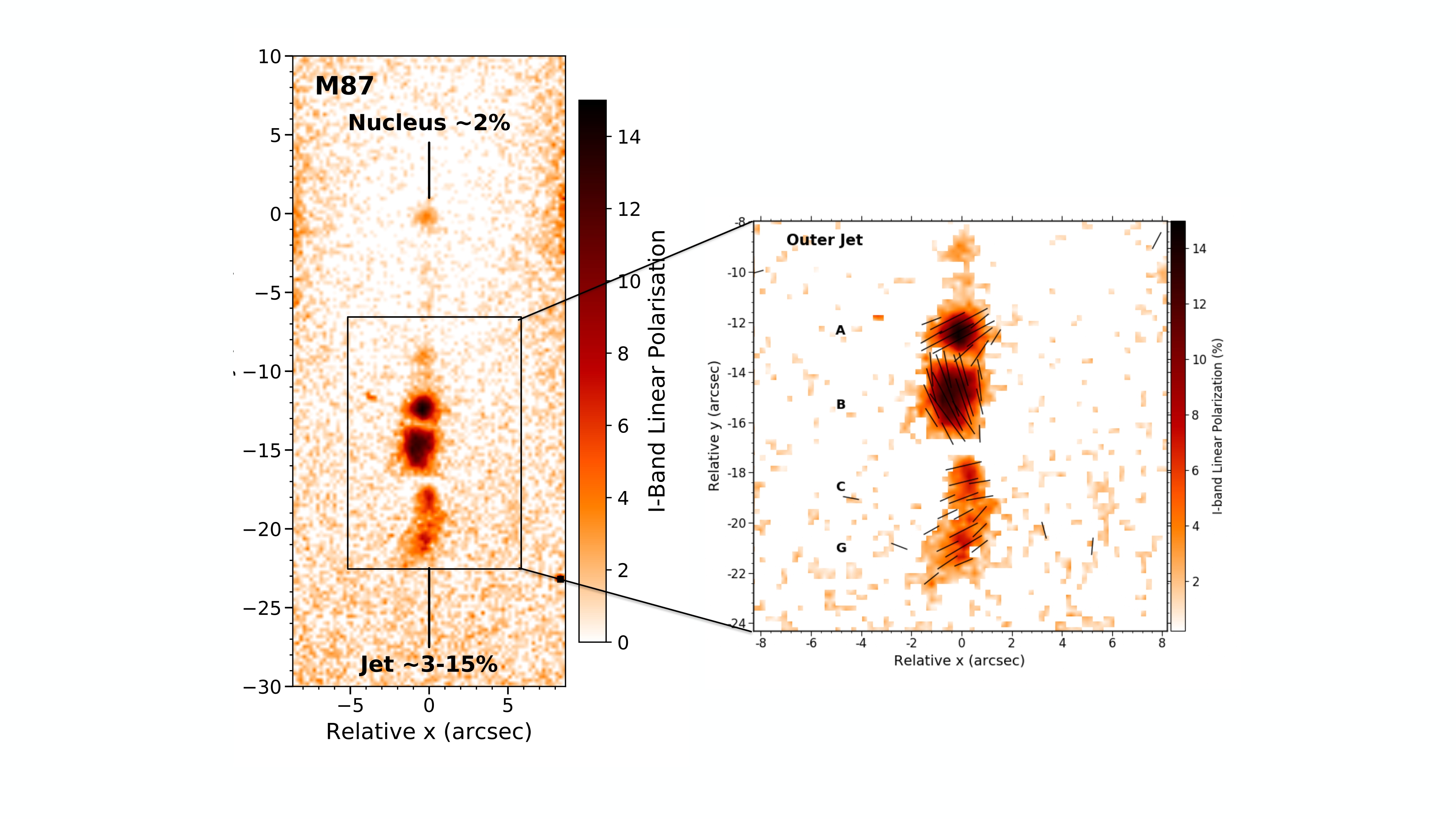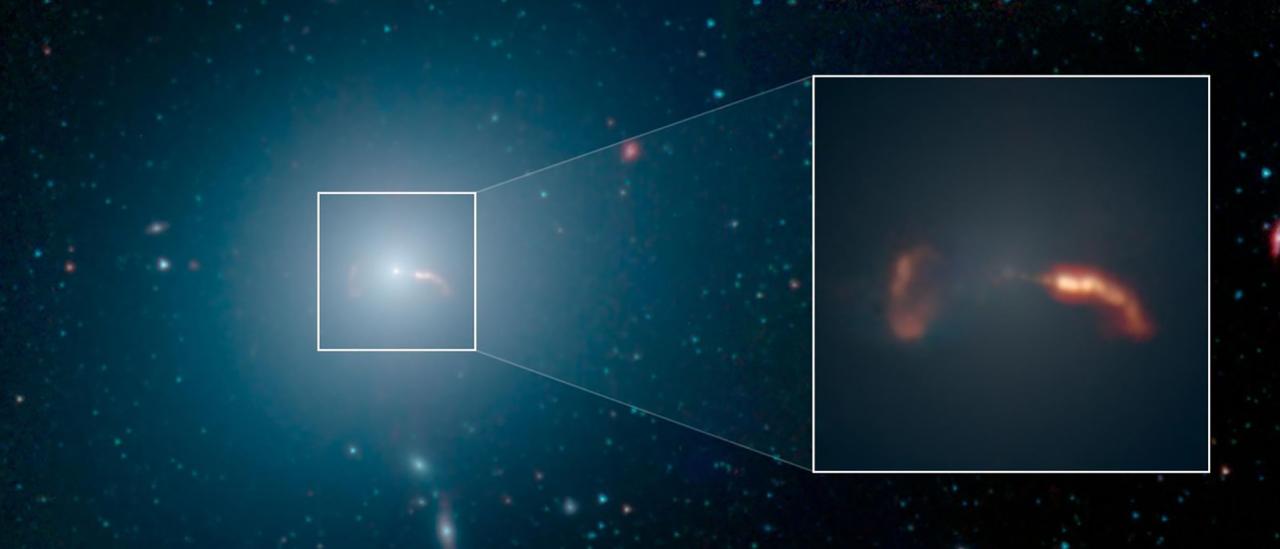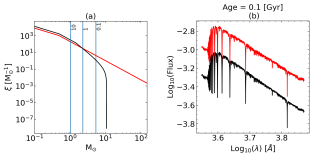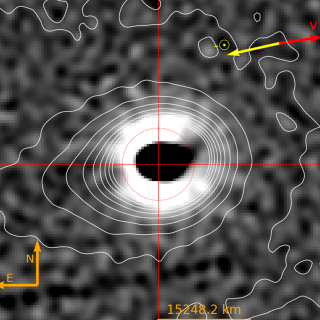A Master’s degree research project at the University of Barcelona (UB), carried out at the Instituto de Astrofísica de Canarias (IAC) by the student Alejandra Yrupe Fresco, currently studying for her doctorate at the Max Planck Institute for Extraterrestrial Physics, in Germany, has revealed the faint nucleus and the structure of the jet of particles in the nuclear region of M87, the brightest galaxy in the Virgo cluster. This project was carried out in collaboration with the IAC researchers Juan Antonio Fernández Ontiveros, Almudena Prieto and José Antonio Acosta Pulido, and was possible thanks to the unique polarimetric capability of the ALFOSC instrument on the Nordic Optical Telescope (NOT), at the Roque de los Muchachos Observatory (Garafía, La Palma).
The observations were carried out at the beginning of April 2017, almost at the same time as the campaign of the Event Horizon Telescope (EHT) which produced the world famous image of the shadow of the supermassive nuclear black hole of M87.
Massive black holes
The surroundings of supermassive nuclear black holes are complex regions dominated by high energy physics, where the particles are accelerated along the axis of the system, giving rise to the formation of strong jets, which extend well beyond the limits of their host galaxies.

The polarization of the light encodes important information about the physical conditions and the magnetic field configuration of the black hole’s surroundings, where this radiation is emitted. When observed in polarized light the nucleus of M87 appears much fainter, and less polarized than the extended jet, which shows a high degree of polarization, of up to 20%. This difference is due to the complexity of the nuclear region, where the structure of the jet is reduced to very small physical scales. “By mapping the orientation angle of the polarized light -explains Alejandra Yrupe Fresco- we can trace the helicoidal structure of the distribution of the magnetic field along the direction of the jet. This is shown by a characteristic pattern where neighbouring sections of the jet emit light which is polarized with perpendicular orientations.”
An additional result of the study is the low level of activity in the neeighbourhood of the nucleus during the observations. HST-1 is a well known gas structure which became even brighter than the nucleus during a period of activity of the outbursts between 2005 and 2007, but which can be barely detected in the images from ALFOSC during April 2017. This was also confirmed by observations with NASA’s Chandra X-ray observatory during the same period.
The study is the result of the Master in Astrophysics at the University of Barcelona of Alejandra Yrupe Fresco –first author of the article (recently published in Monthly Notices of the Royal Astronomical Society) within the project PARSEC (The central parsec of galaxies across the electromagnetic spectrum): http://research.iac.es/proyecto/parsec/main/index.php
The work was conceived and directed completely by Juan Antonio Fernández Ontiveros, currently in the Institute of Space Astrophysics and Planetology (INAF-IAPS), in Italy, and Almudena Prieto. Alejandra Yrupe Fresco has a studentship to work for her doctorate at the Max Planck Institute for Extraterrestrial Physics, under directed by Andrea Merloni and Celine Peroux (ESO).
Article: A. Y. Fresco, J.A. Fernández-Ontiveros, M.A. Prieto, J.A. Acosta-Pulido, A. Merloni, “Low optical polarisation at the core of the optically-thin jet of M87”. Monthly Notices of the Royal Astronomical Society, June 2020. DOI: https://doi.org/10.1093/mnras/staa1566
Preprint: https://arxiv.org/abs/2005.14719
Contact:
- Alejandra Yrupe Fresco: afresco [at] mpe.mpg.de (afresco[at]mpe[dot]mpg[dot]de)



